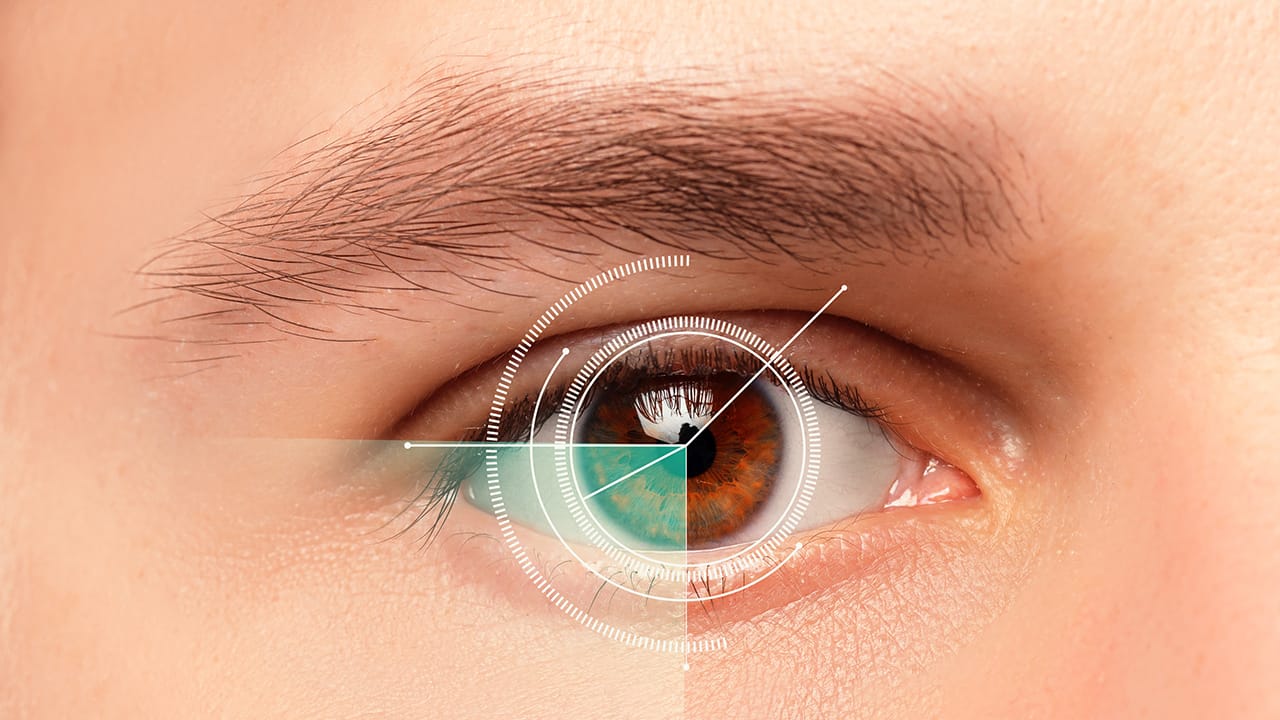Myopia is one of the most common vision disorders in the world and usually occurs during childhood or adolescence. This eye disease causes distant objects to appear blurry, while close objects can be seen clearly. These people usually see an eye doctor with complaints such as watching TV from a distance, not being able to see the board clearly, or having difficulty reading signs while driving. While myopia symptoms can vary from person to person, they can progress over time and negatively affect daily life.
Myopia treatment can be done with various methods. In addition to classic solutions such as glasses or contact lenses, laser eye surgeries are also among the permanent solutions. The answer to the question of how to treat nearsightedness may vary depending on the patient’s age, eye structure, and degree of refractive error. Especially in high degrees, the treatment and follow-up process should be carried out more carefully.
İçindekiler
Toggle
What is Myopia?
Myopia is an eye refractive error in which distant objects cannot be seen clearly but nearby objects can be seen clearly. This condition occurs when the eyeball is longer than normal or the corneal curvature increases. It causes the light coming from the eye to focus in front of the retina instead of the retina.
It is usually linked to genetic factors. It is more likely to develop in people with a family history of the disease. In addition, long-term close work in childhood, such as reading a book or looking at digital screens, can also trigger the development of this vision defect.
What Causes Myopia?
The question of what causes myopia is one of the most curious topics for people who encounter this eye disease for the first time. Many factors play a role in the emergence of this condition:
The eyeball is longer than normal
The cornea or lens of the eye is more curved than normal
Genetic predisposition
Long-term close-range visual activities
Not spending enough time outdoors
Long periods spent in front of the screen
People with the disease usually start to see the first symptoms in childhood. However, lifestyle and environmental factors can also significantly affect the development of the problem of not being able to see clearly in the distance.
What are the Types of Myopia?
Myopia can be seen in different types and each type has its own characteristics:
Simple Type: It is the most common type. It develops as a result of the eyeball being structurally long.
High Type: It is defined in cases where the degrees of the disease are over -6.00 diopters. The risk of retinal tears and glaucoma may increase.
Night myopia: It is characterized by deterioration of vision in low-light conditions.
Pseudomyopia: It is a myopic condition that develops temporarily due to eye fatigue or spasm.
Degenerative Type: This is a rare but serious form. It progresses with structural changes in the back of the eye and thinning of the retina.
Distinguishing these types correctly is of great importance in terms of treatment.
What are the Symptoms of Myopia?
Myopia symptoms may become apparent over time. Below are some symptoms frequently seen in people with myopia:
Distant objects appear blurry
Need to squint
Frequent headaches
Eye fatigue and difficulty focusing
Difficulty seeing while driving at night
Blinking and frequently rubbing the eyes
Noticing symptoms in your child (for example, not being able to see the blackboard)
If one or more of these symptoms are present, an eye doctor should be consulted without delay. Regular eye examinations play a major role in the early diagnosis of eye diseases such as myopia.

How Do Myopes See?
While myopia sees distant objects blurry, they usually do not have problems with the clarity of close objects. This situation is especially noticeable in school-age children. Habits such as not being able to see the board or watching TV too closely may suggest general symptoms.
Cannot read distant writings
Cannot see signs or traffic signs clearly
May have vision problems while doing sports or driving
May have to constantly squint
This type of vision is a defect and can reduce the quality of life of individuals. Most of these problems can be controlled with early diagnosis and appropriate myopia treatment.
Myopia Degrees
Myopia degrees are expressed in the diopter (D) unit, which indicates the focusing power of the eye. It is generally classified as follows:
Low-degree: -0.25 D to -3.00 D
Medium-degree: -3.00 D to -6.00 D
High: Above -6.00 D
People with high degrees have a higher risk of other eye diseases such as retinal diseases, cataracts and glaucoma. Therefore, regular follow-up and eye examination are of great importance.
How is Myopia Treated?
The question of how myopia is treated requires different answers depending on the level of the disease, age and eye structure. The basic treatment methods are as follows:
Glasses or contact lenses: The most common and safe solution. Provides visual clarity.
Orthokeratology lenses: Thanks to special lenses worn at night, the cornea can be shaped and clear vision can be provided throughout the day.
Laser treatments: Suitable for those looking for a permanent solution. Compatibility with the eye structure is required.
Intraocular lens implants: Preferred for people who are not suitable for laser surgery.
The treatment preference should definitely be made in consultation with an ophthalmologist. Each method has its advantages and limitations.

Eye Laser Surgery for Myopia Treatment
Eye laser surgery is one of the modern methods that offer a permanent solution in myopia treatment. It is ideal especially for individuals who do not want to wear glasses or contact lenses.
Laser treatment types are as follows:
LASIK: It is the most commonly used method. The shape of the cornea is rearranged with laser.
PRK: It is preferred for people with thin corneas. The recovery period is longer.
SMILE: It is a newer technique and the recovery period is short.
A detailed eye examination is performed before the laser operation. The structure of the eye, corneal thickness and the degree of the disease are evaluated and a personalized treatment plan is created.
Frequently Asked Questions
Does myopia progress?
Yes, it can progress especially in childhood and adolescence. However, with appropriate treatment and follow-up, the progression can be controlled.
Is myopia permanent?
Yes, it is a permanent eye disease, but it can be controlled with vision correction devices. Laser treatments can offer a permanent solution.
Can other eye diseases develop together with myopia?
People with high degrees are at higher risk of eye diseases such as retinal tears, glaucoma and cataracts. Therefore, regular check-ups are important.
Can laser treatment be applied to everyone?
No, laser treatment is not recommended for people whose eye structure is not suitable. Therefore, it is necessary to consult an eye doctor for details.